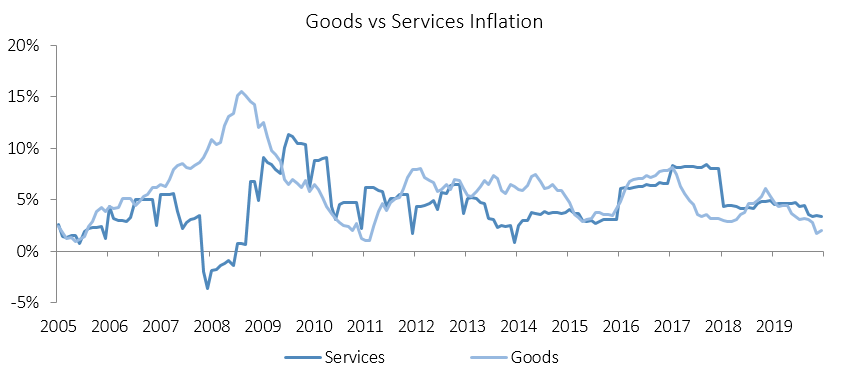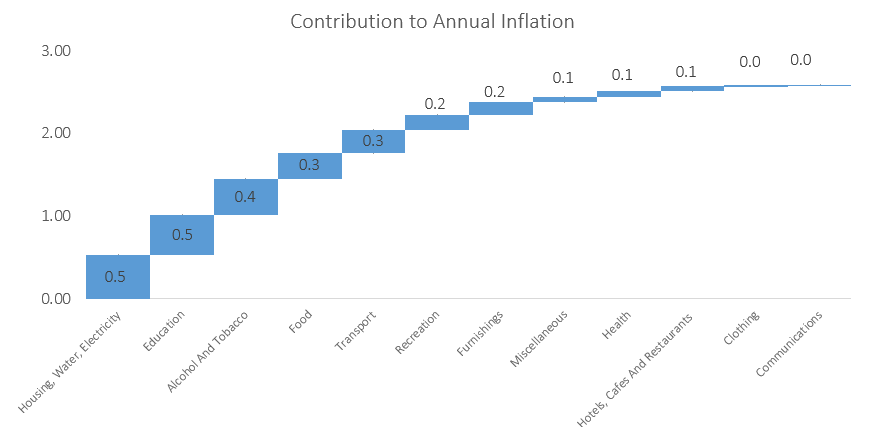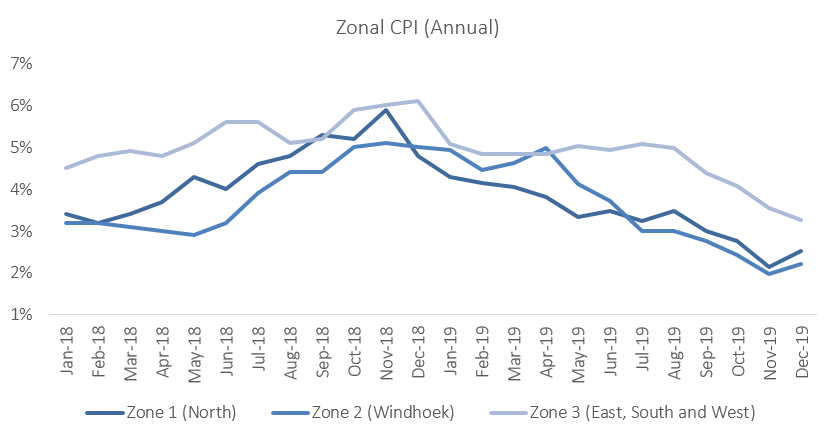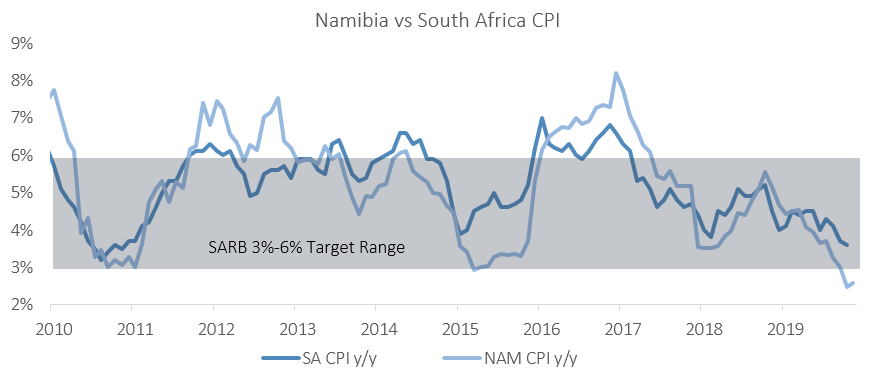
The Namibian annual inflation rate increased marginally to 2.6% in December, following the 2.5% y/y increase in prices recorded in December. Prices in the overall NCPI basket decreased by 0.1% m/m. The annual average inflation rate for 2019 was 3.7%, compare to 4.3% in 2018 and 6.2% in 2017. On a year-on-year basis, overall prices in seven of the twelve basket categories rose at a quicker rate in December than in November, with three categories recording slower rates of inflation and two categories recorded increases consistent with the prior month. Prices for goods increased by 2.0% y/y while prices for services increased by 3.4% y/y.

In December the housing and utilities category was once again the largest contributor to annual inflation due to its large weighting in the basket, accounting for 0.5 percentage points of the total 2.6% annual inflation rate. Price inflation for this category came in at 1.9% y/y for a third consecutive month and remained relatively flat month-on-month. Prices in the electricity, gas and other fuels subcategory remained flat m/m, but declined by 0.8% y/y. The regular maintenance and repair of dwellings subcategory registered an increase in prices of 5.0% y/y. Month-on-month, prices in this subcategory fell by 0.7%. Annual inflation for rental payments remained unchanged at 2.3% y/y in December.

The education basket recorded inflation of 12.0% y/y, with the cost of pre-primary and primary education growing at a rate of 12.6% y/y, while secondary- and tertiary education recorded price increases of 11.0% y/y and 12.7% y/y, respectively. All three subcategories printed no price increases on a month-on-month basis.
The alcohol and tobacco category displayed a decrease of 0.1% m/m, but an increase of 3.2% y/y. The main driver in this basket category was alcohol prices which increased by 4.9% y/y while tobacco prices were down 4.3% y/y. A 7.8% m/m decrease in tobacco prices, recorded in May, is the cause for annual decrease in tobacco prices. The Namibia Statistics Agency (NSA) has not provided any explanation for this decrease in any of its bulletins since May.

The zonal data shows that prices fell by 0.3% m/m in the northern regions, and by 0.1% m/m in the east, south and western regions, while rising by 0.1% m/m in the central region. On an annual basis, the Central region recorded the lowest inflation rate at 2.2% in December, with the mixed zone 3 covering the south, east and west of the country recording the highest rate of inflation at 3.3%. Inflation in the northern region of the country increased to 2.5% y/y.

The Namibian annual inflation rate of 2.6% for December continues to trend lower than that of neighbouring South Africa’s November inflation figure of 3.6%. Inflationary pressure in Namibia has been particularly low in the second half of 2019 due to a lack of demand for both goods and services. IJG’s inflation model forecasts an average inflation rate of 3.5% y/y in 2020. The largest upside risk to this forecast is higher food costs and fuel prices. Although the northern and central regions received an encouraging amount of rainfall in December, large parts of the southern region are yet to receive their first rains. Food prices will likely increase if the country experiences another year of below average rainfall.
Geopolitical tension between the US and Iran seems to have calmed down (for the moment at least) and the price of Brent Crude oil has ‘normalised’ at US$64 at the time of writing after spiking to US$71 last week. However, peace in the middle east is all-but-certain and the situation can escalate within the wink of an eye, which will send the price of oil up again. Another potential risk for the oil price is if OPEC goes ahead with the implementation of its plan to cut production by 500,000 barrels per day. Such shocks in the oil price will result in the Ministry of Mines and Energy increasing fuel pump prices for Namibians which will translate into higher transport inflation.

